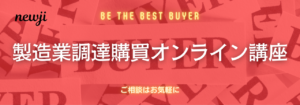- お役立ち記事
- Differences between screen printing and pad printing and application examples by industrial use

Differences between screen printing and pad printing and application examples by industrial use

目次
Introduction to Printing Methods
In the world of printing, there are numerous techniques used to transfer images, text, or patterns onto different surfaces.
Among these, screen printing and pad printing stand out due to their versatility and broad range of applications.
Despite serving similar purposes, these two methods have distinct characteristics that make them suitable for different types of industrial use.
In this article, we’ll explore the differences between screen printing and pad printing, and discuss examples of how each is applied across various industries.
Understanding Screen Printing
Screen printing, also known as silk screening, is a method where ink is applied onto a substrate through a mesh screen.
The mesh is coated with a light-sensitive emulsion that, when exposed to light, becomes impermeable in areas where the ink should not pass.
This creates a stencil.
The ink is then forced through the mesh using a squeegee, directly onto the surface below.
Benefits of Screen Printing
Screen printing is renowned for its ability to produce vibrant, durable colors.
This method is effective for printing on a wide array of materials, including textiles, glass, ceramics, and plastics.
It allows for thick ink deposits, resulting in rich color saturation and a tactile finish that is difficult to achieve with other printing techniques.
This method is also cost-effective for large volumes, making it an excellent choice for mass production.
Applications of Screen Printing
Screen printing is popular in the textile industry for creating custom t-shirts and other apparel.
The durability and vivid colors produced by screen printing are ideal for branding and promotional items.
In addition, it is used in electronics to print circuit patterns onto PCB boards.
Diving into Pad Printing
Pad printing, on the other hand, is a unique printing process that enables the transfer of a 2D image onto a 3D object.
This is achieved using an indirect offset (gravure) printing process in which an image is transferred from an etched plate to a silicone pad and then onto the substrate.
Benefits of Pad Printing
Pad printing is exceptionally versatile and can print on irregularly shaped objects and surfaces that are challenging for other printing methods.
It can deliver fine details and sharp, precise images, even on complex objects.
This method is also adaptable to different substrates, including ceramics, metals, rubber, and plastics.
Applications of Pad Printing
Pad printing is widely used in industries requiring high precision, such as the medical industry for marking medical devices and instruments.
It is also employed in the automotive industry for decorating parts and controls.
In the consumer electronics field, it is used to print on items like keyboards and electronics enclosures.
Comparing Screen Printing and Pad Printing
Printing Process
The primary difference between screen printing and pad printing lies in their processes.
Screen printing uses a stencil-based method suitable for flat or slightly curved surfaces, whereas pad printing is ideal for printing on complex shapes and surfaces.
Materials and Substrates
While both methods can handle a variety of substrates, screen printing is often favored for larger, flat surfaces, and textiles.
Pad printing excels in scenarios where intricate detail is required on small or irregularly shaped objects.
Volume and Cost
In terms of cost-effectiveness, screen printing is generally more affordable for large production runs because of its speed and ability to lay down large areas of ink.
Pad printing, however, is preferred for smaller, detailed work despite potentially higher costs for setup.
Quality and Durability
Screen printing produces more vibrant and longer-lasting colors, especially important in textiles where durability is a key consideration.
Pad printing, while delivering fine detail, may not offer the same vibrancy but excels in applications where detail precision is paramount.
Choosing the Right Printing Method for Your Needs
When deciding between screen printing and pad printing, it’s essential to consider the characteristics of your product, the level of detail required, and the type of substrate involved.
If you are producing items that are flat or slightly curved, benefit from bold colors, and are in larger quantities, screen printing might be the preferred choice.
Conversely, for intricate or detailed printing on complex shapes, pad printing offers unparalleled precision.
Conclusion
Understanding the differences between screen printing and pad printing allows industries to select the most appropriate method for their specific needs.
Each offers unique strengths that can be leveraged to enhance product quality and aesthetic appeal.
By considering factors such as material, detail, and production volume, businesses can make informed choices, ensuring optimal outcomes in their printing ventures.
 資料ダウンロード
資料ダウンロード
QCD管理受発注クラウド「newji」は、受発注部門で必要なQCD管理全てを備えた、現場特化型兼クラウド型の今世紀最高の受発注管理システムとなります。
 NEWJI DX
NEWJI DX
製造業に特化したデジタルトランスフォーメーション(DX)の実現を目指す請負開発型のコンサルティングサービスです。AI、iPaaS、および先端の技術を駆使して、製造プロセスの効率化、業務効率化、チームワーク強化、コスト削減、品質向上を実現します。このサービスは、製造業の課題を深く理解し、それに対する最適なデジタルソリューションを提供することで、企業が持続的な成長とイノベーションを達成できるようサポートします。
 製造業ニュース解説
製造業ニュース解説
製造業、主に購買・調達部門にお勤めの方々に向けた情報を配信しております。
新任の方やベテランの方、管理職を対象とした幅広いコンテンツをご用意しております。
 お問い合わせ
お問い合わせ
コストダウンが利益に直結する術だと理解していても、なかなか前に進めることができない状況。そんな時は、newjiのコストダウン自動化機能で大きく利益貢献しよう!
(β版非公開)






